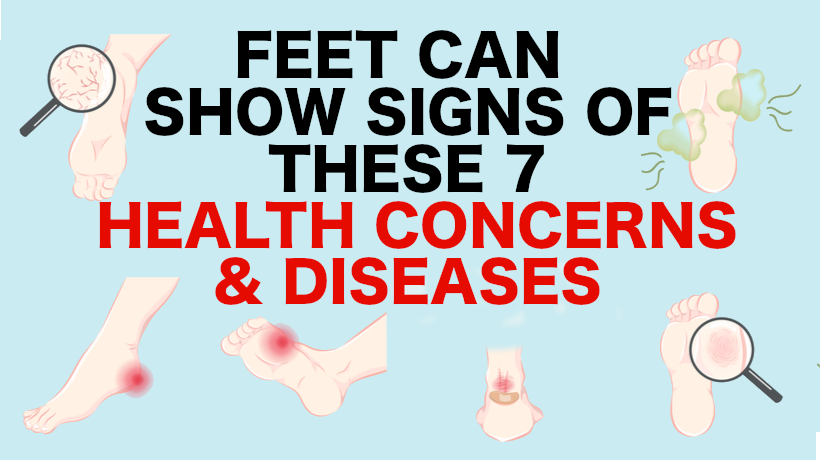Sometimes we can get so caught up in daily life that we take things for granted. Our feet, for example. Our feet can reveal a lot about our overall health. Next time you sit down, try and pay closer attention to your feet. They may be telling you something about your body’s health.
Fungal Infections
Fungal infections can happen everywhere, but let us focus on the ones found on the feet. Otherwise known as Athlete’s Foot, there are some symptoms to look out for that may indicate the onset of this disease. Some symptoms to look out for: You feel itching, stinging, or burning between your toes or on the soles of your feet, cracking and peeling skin on your feet, most commonly between your toes and on your soles, dry skin on your soles or sides of your feet, and/or raw skin on your feet according to Cynthia Cobb, DNP, APRN, WHNP-BC, FAANP.
Talk to your doctor if you suspect that you have a fungal infection. They may be able to prescribe you over the counter medicine that can help to reduce infections and help you get back on track. Tea tree oil has been known to be an effective alternative solution for treating athlete’s foot. According to Cobb, A study from 2002 reported that a 50 percent solution of tea tree oil effectively treated athlete’s foot in 64 percent of trial participants.
Diabetes
If you have nerve damage in your feet, you may not be able to feel anything. Some people with nerve damage have numbness, tingling, or pain, but others have no symptoms. Nerve damage can also lower your ability to feel pain, heat, or cold says the CDC. The agency also says that while this may sound heavenly, it may come with lots of consequences. Pain is the body’s way of telling you that something is wrong and that you need to take care of it. The CDC warns, “If you don’t feel pain in your feet, you may not notice a cut, blister, sore, or other problem. Small problems can become serious if they aren’t treated early.”
South Bay Vascular Center and Vein Institute, a surgical institute in California, states that it is important to focus on the feet if you have diabetes. “The main reason why diabetic wounds do not heal is due to lack of blood flow to the ulcer and ongoing pressure to the wound,” they said.
Thyroid
Your feet may be able to tell you about underlying thyroid symptoms. If you have dry, pale, and cool skin, slow-healing wounds, yellowish-orange color on your palms and soles, dry skin with deep cracks and scale, painless lumps and patches of scaly skin feel hard and waxy, or itchy skin without a rash (among many other symptoms listed by the American Academy of Dermatology Association, you may have a thyroid symptom.
While a combination of these signs may not mean that you definitely have thyroid problems, if you are not feeling like yourself, you should contact your doctor right away and test for thyroid disease.
Iron Deficiency
If you constantly have cold hands and feet, this may mean that you have an iron deficiency, according to Mary Jane Brown, Ph.D., RD (UK).
Heart Disease
While you should always go to the doctor to check if you have heart disease, swollen feet, legs, and ankles may be an early sign that you may what is called Edema. Edema is a sign of a heart problem. This should not be ignored. If you notice that you have swollen areas down below the waist, contact your doctor and get tested for heart disease and/or other possible diseases.
Gout
Swollen feet can tell you a lot about yourself and your overall health. If you have swollen feet (especially a swollen big toe) this could be a sign of gout. Foods like anchovies, sardines, herring, scallops, trout, turkey, bacon, and veal may cause gout if they are eaten in high amounts. Gout is caused by an abundance of uric acid in the body. The body makes this acid when it tries to break down purines, which is found in your body and in the foods you eat, according to the CDC.
The best way to beat gout is to speak with your doctor. They may be able to provide you with over the counter pain medication and other suggestions that may help to reduce the amount of uric acid created in the body. Other ways to ease a gout attack: switching your diet and watching what you eat, drinking a lot of water, rest, and ice packs.
Artery Problems
PAD, also known as peripheral artery disease, is incredibly common. While the most common symptom of PAD is cramping in the hip, thigh, and calf area haven you walk, there are a few other symptoms to look out for.
- Leg pain that does not go away when you stop exercising
- Foot or toe wounds that won’t heal or heal very slowly
- Dead tissue
- A marked decrease in the temperature of your lower leg or foot particularly compared to the other leg or to the rest of your body
- Poor nail growth on the toes or hair growth on the legs



